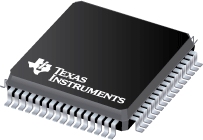This is a getting started guide for obtaining the ULPMarkв„ў-CP score using the Embedded Microprocessor Benchmark Consortium (EEMBC) ULPBench and EnergyMonitor with the MSP430FR5969 microcontroller (MCU). This document uses the MSP-EXP430FR5969 LaunchPad development kit as the target evaluation module (EVM) for performing the benchmark.
PDF, 183 Kb, Revision: B, File published: Nov 3, 2016
This application report enables easy migration from MSP430F4xx flash-based MCUs to the MSP430FR58xx/59xx/68xx/69xx family of FRAM-based MCUs. The intent is to highlight key differences between the two families. For more information on the use of the MSP430FR58xx/FR59xx/68xx/69xx devices, see the MSP430FR58xx, MSP430FR59xx, MSP430FR68xx, and MSP430FR69xx Family User's Guide.
PDF, 137 Kb, Revision: A, File published: Mar 30, 2016
Designing an application with the analog-to-digital converter (ADC) requires several considerations to optimize for power and performance. This application report discusses the basics of how you would analyze a data sheet and user's guide to design your application. It goes into the fundamentals of how to optimize your design based on the external requirements and available ADC configurations. The
PDF, 4.0 Mb, File published: Jun 9, 2014
MSP430 microcontrollers are designed specifically for ultra-low-power applications. Features such as multiple low-power modes, instant wakeup, intelligent autonomous peripherals, and much more to enable such ultra-low-power capabilities. Texas Instruments provides valuable tools to help the programmer fully use these benefits and optimize power consumption of the target application. This app
PDF, 326 Kb, File published: Jun 23, 2014
FRAM is a non-volatile memory technology that behaves similar to SRAM while enabling a whole host of new applications, but also changing the way firmware should be designed. This application report outlines the how to and best practices of using FRAM technology in MSP430 from an embedded software development perspective. It discusses how to implement a memory layout according to application-specif
PDF, 295 Kb, Revision: A, File published: May 1, 2014
FRAM is a nonvolatile embedded memory technology and is known for its ability to be ultra-low power while being the most flexible and easy-to-use universal memory solution available today. This application report is intended to give new FRAM users and those migrating from flash-based applications knowledge on how FRAM meets key quality and reliability requirements such as data retention and endura
PDF, 2.1 Mb, Revision: A, File published: Jul 20, 2015
Segment liquid crystal displays (LCDs) are needed to provide information to users in a wide variety of applications from smart meters to electronic shelf labels (ESL) to medical equipment. Several MSP430в„ў microcontroller families include built-in low-power LCD driver circuitry that allows the MSP430 MCU to directly control the segmented LCD glass. This application note helps explain how segmented
PDF, 151 Kb, Revision: D, File published: Nov 3, 2016
This application report helps enable easy migration from MSP430F5xx and MSP430F6xx flash-based MCUs to the MSP430FR58xx/FR59xx/68xx/69xx FRAM-based MCUs. For the migration guide to MSP430FR57xx, see Migrating From the MSP430F2xx Family to the MSP430FR57xx Family. It covers programming, system, and peripheral considerations when migrating firmware. The intent is to highlight differences between the
PDF, 179 Kb, Revision: E, File published: Nov 3, 2016
This application report enables easy migration from MSP430F2xx flash-based MCUs to the MSP430FR58xx/FR59xx/68xx/69xx family of FRAM-based MCUs. For the migration guide to MSP430FR57xx, see Migrating From the MSP430F2xx Family to the MSP430FR57xx Family. It covers programming, system, and peripheral considerations when migrating firmware. The intent is to highlight key differences between the two f
PDF, 551 Kb, Revision: A, File published: Apr 1, 2016
Multiple MSP ultra-low-power microcontrollers offer analog-to-digital converters (ADCs) to convert physical quantities into digital numbers, a function that is widely used across numerous applications. There are times, however, when a customer design demands a higher resolution than the ADC of the selected MSP can offer. This application report, which is based on the previously-published Oversampl
Model Line
Series:
MSP430FR58721 (2)
Manufacturer's Classification
- Semiconductors> Microcontrollers (MCU)> MSP430 ultra-low-power MCUs> MSP430FRxx FRAM



